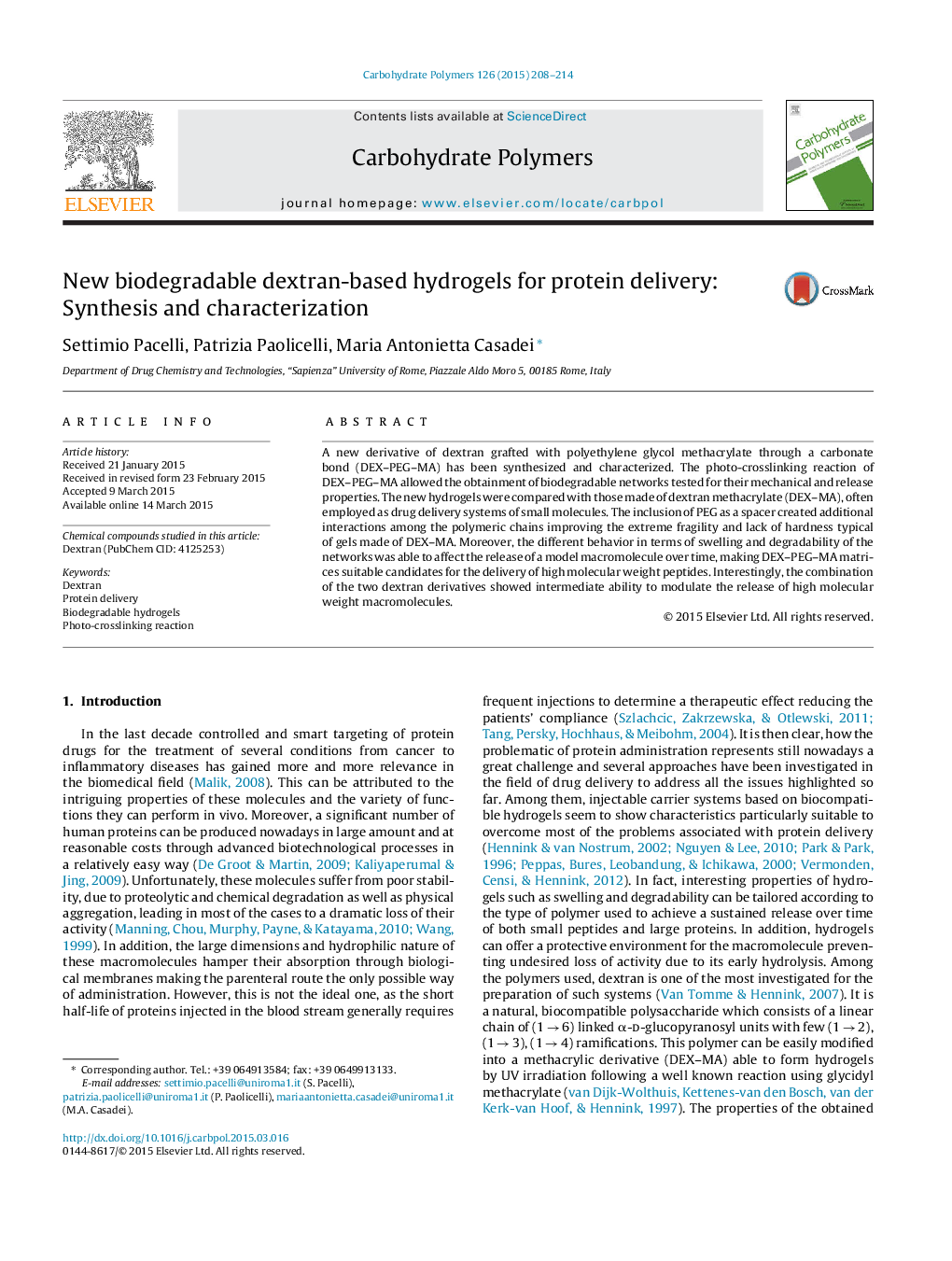| Article ID | Journal | Published Year | Pages | File Type |
|---|---|---|---|---|
| 1383626 | Carbohydrate Polymers | 2015 | 7 Pages |
•Design of a new biodegradable derivate of dextran having liable carbonate groups.•Positive influence of a PEG spacer on the elasticity and hardness of the matrix.•Precise control over the degradability of new photochemical hydrogels.•Protein release modulated according to the rate of degradation.
A new derivative of dextran grafted with polyethylene glycol methacrylate through a carbonate bond (DEX–PEG–MA) has been synthesized and characterized. The photo-crosslinking reaction of DEX–PEG–MA allowed the obtainment of biodegradable networks tested for their mechanical and release properties. The new hydrogels were compared with those made of dextran methacrylate (DEX–MA), often employed as drug delivery systems of small molecules. The inclusion of PEG as a spacer created additional interactions among the polymeric chains improving the extreme fragility and lack of hardness typical of gels made of DEX–MA. Moreover, the different behavior in terms of swelling and degradability of the networks was able to affect the release of a model macromolecule over time, making DEX–PEG–MA matrices suitable candidates for the delivery of high molecular weight peptides. Interestingly, the combination of the two dextran derivatives showed intermediate ability to modulate the release of high molecular weight macromolecules.
